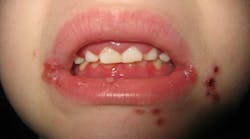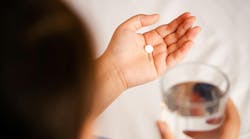Tooth decay prevention for kids to be emphasized
CHICAGO--According to a new study, supported in part by the Agency for Healthcare Research and Quality, children who are exposed to secondhand smoke have a significantly higher rate of tooth decay than children who do not grow up around smokers.
The study is the first in the United States to associate secondhand, or passive, smoking with tooth decay, a public health problem that costs an estimated $4.5 billion annually.
Secondhand smoke is a combination of the smoke from a burning cigarette and the smoke exhaled by the smoker. Also known as environmental tobacco smoke, it can be recognized easily by its distinctive odor. ETS contaminates the air and is retained in clothing, curtains and furniture.
Many people find ETS unpleasant, annoying, and irritating to the eyes and nose. More importantly, it represents a dangerous health hazard. More than 4,000 different chemicals have been identified in ETS, and at least 43 of these chemicals cause cancer.
"Children exposed to secondhand smoke are at risk for a multitude of health problems including, as this study demonstrates, cavities!" said Carol Southard, RSN, MSN, project consultant for AHDA's Smoking Cessation Initiative.
"By incorporating the ADHA's Ask. Advise. Refer. model into practice, dental hygienists can effectively help their clients quit smoking--thus enhancing the health of their clients as well as protecting the health of children who would otherwise be exposed to secondhand smoke."
"With the release of this study information, it becomes even more imperative for dental hygienists nationwide to educate parents, guardians and care takers on the negative effects of secondhand smoke, as well as to provide helpful instructions on how to eliminate the preventable and transmissible oral disease of dental decay," added Marge Green, CDA, RDH, MS, ADHA President.
Between 150,000 and 300,000 children ranging from 12 to 18 months of age are affected by secondhand smoke each year. About 15,000 of them are admitted to the hospital with illnesses like bronchitis and pneumonia. About 300 of these children die from respiratory problems related to secondhand smoke, including asthma attacks.
Children exposed to secondhand smoke are more likely to have reduced lung function and symptoms of respiratory irritation like coughing, excess phlegm, and wheezing. Passive smoking can lead to buildup of fluid in the middle ear, the most common cause of the hospitalization of children requiring an operation.
While the occurrence of dental caries in children has declined dramatically in the United States, little headway has been made in reducing caries in children living in poverty, who generally have less access to dental care and appear to be more vulnerable to dental decay.
Based on data from household interviews and health examinations of approximately 4,000 children ages 4 to 11 years, the AHRQ study found that children had an increased risk of tooth decay if they had high levels of cotinine, a by-product of nicotine that is consistent with secondhand smoke exposure.
According to a recent Surgeon General's report, dental problems can have substantial consequences including pain and suffering, problems associated with eating and speaking, and difficulty learning. It is estimated that dental problems cause children to miss more than 50 million hours of school time each year.
ADHA encourages dental hygienists across the country to get involved with ADHA's Smoking Cessation Initiative and to discuss the ill effects of secondhand smoke exposure in children with their patients. In order to take an important step in the fight to prevent caries, dental hygienists should educate their adult patients who smoke on how to quit.
For information on the Smoking Cessation Initiative, visit www.askadviserefer.org .

